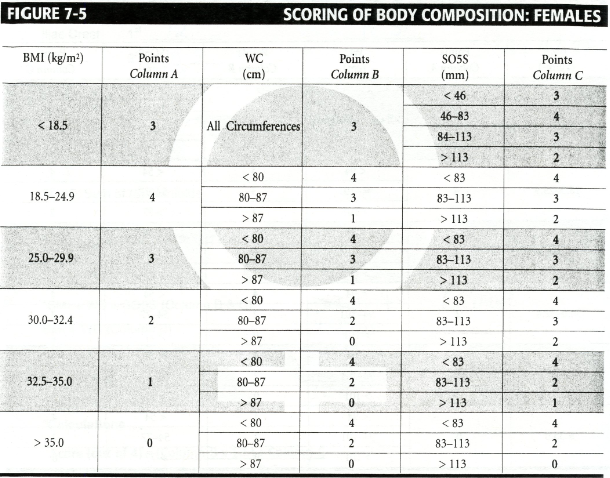The three structures that make up an individual’s body composition include muscle, fat, and bone mass, which can be measured through the evaluation of waist circumference, skinfold measurements, body mass index (BMI), bioelectrical impedance (BIA), hydrostatic weighing, and dual energy x-ray absorptiometry (DEXA). Unhealthy body composition, referring to too much body fat in comparison to lean muscle mass, can involve many health complications including heart disease, stroke, high blood pressure, high cholesterol, type II diabetes, certain forms of cancer, etc. The most practical way to estimate body fat composition is through the combination of BMI, the sum of 5 skinfolds (SO5S), and waist circumference or girth.
BMI is a measure of body fat based on an individual’s height and weight. A normal BMI is considered to be between 18.5 and 24.9, where anything less is considered to be underweight. Overweight individuals fit in between 25-29.9, and obese individuals have a BMI greater than 30. In addition to BMI, five skinfold measurements are evaluated. Skinfold measurements are taken from the triceps, the biceps, subscapular (just below the shoulder blade), iliac crest (top of hip bone), and the inside of the calf. Finally, waist circumference helps screen for risks associated with overweight and obese individuals. Those with fat around the waist are more at risk for heart disease and type II diabetes than an individual with fat around the hips. Below are the results of a sample client’s BMI, waist girth, and the sum of 5 skinfolds, as well as classifications of BMI and waist girth scores.





